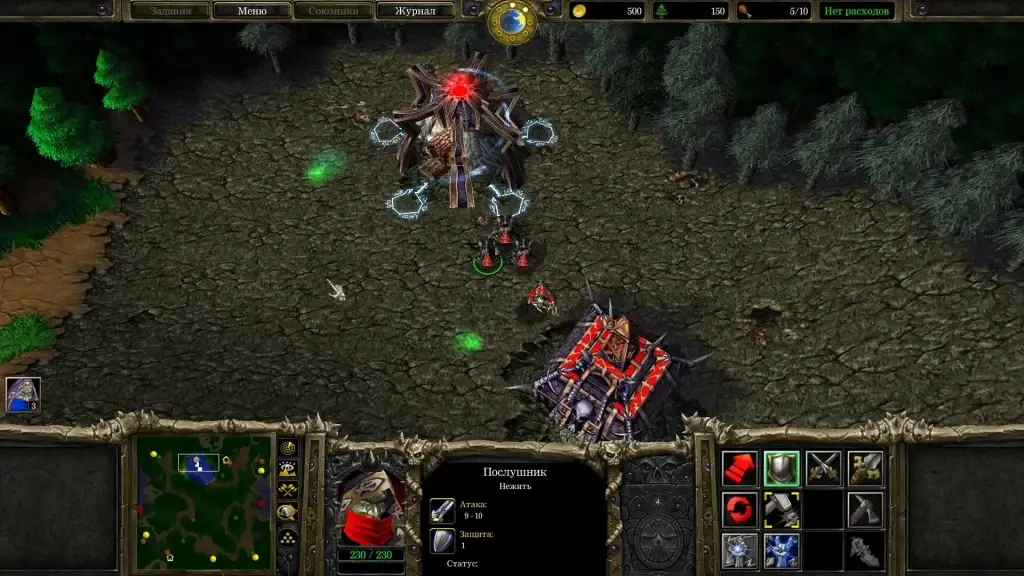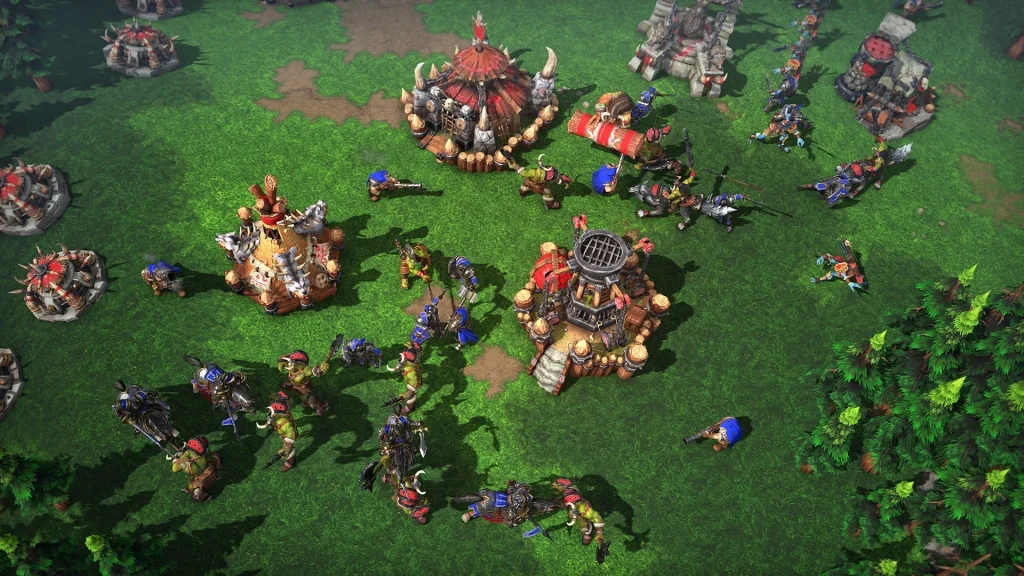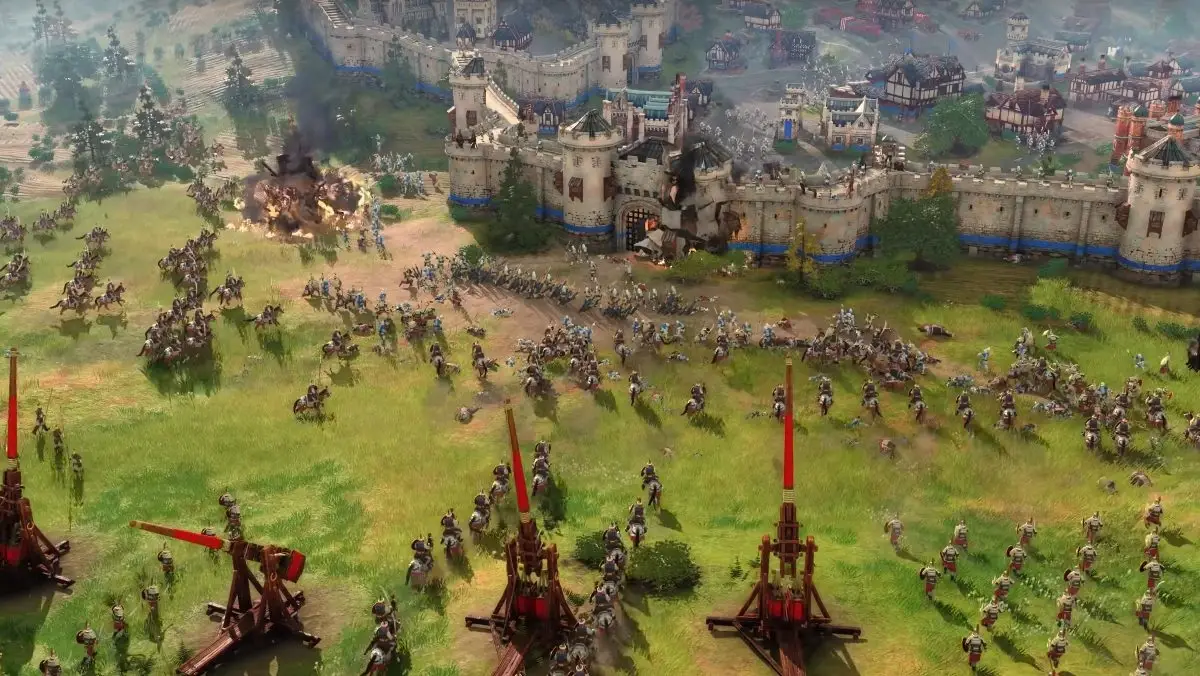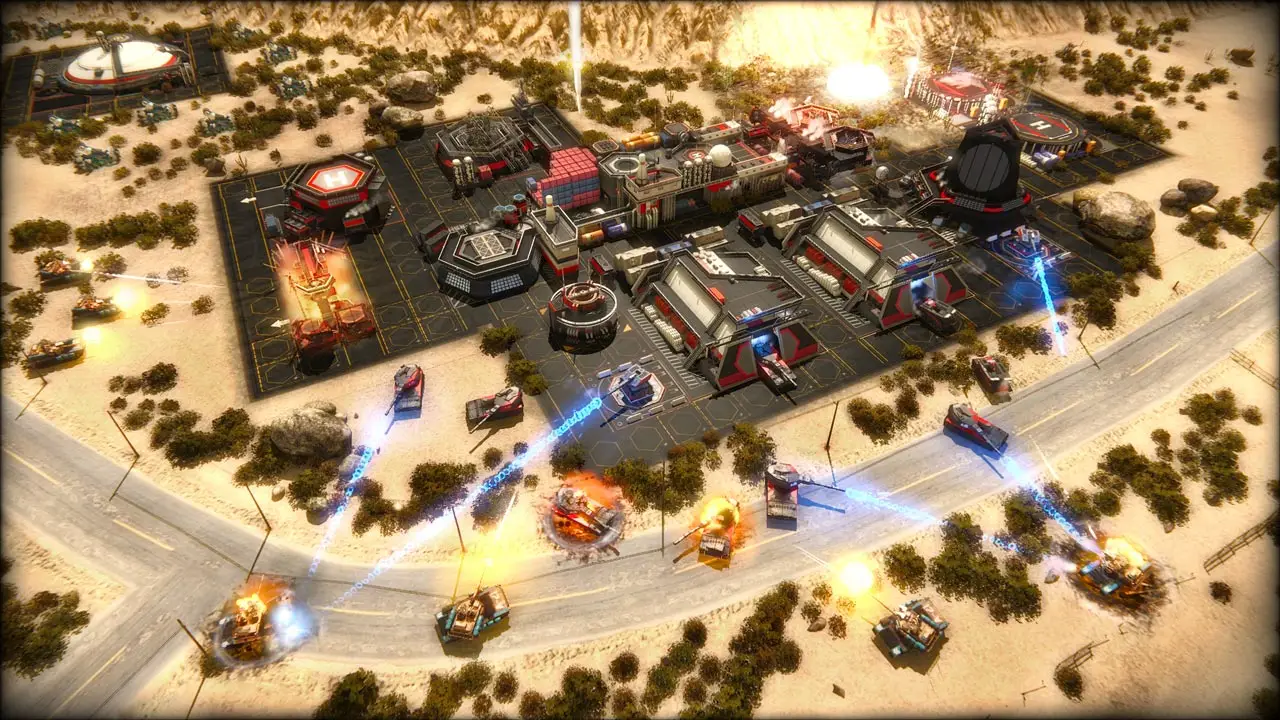Warcraft 3: The Frozen Throne was a cultural phenomenon and a turning point for the real-time strategy industry. Developed by Blizzard Entertainment, it was more than just an expansion to the original Warcraft 3: Reign of Chaos; it revolutionized the genre by introducing new mechanics, characters, and depth to the story. Since its release on July 1, 2003, Warcraft 3: The Frozen Throne has continued to inspire gamers and developers, setting the foundation for an entire genre.
History of Creation and the First Step to Legend
The development of Warcraft 3: The Frozen Throne began immediately after the success of Reign of Chaos. Blizzard Entertainment decided it was time to delve deeper into the storylines and provide more tools for creative expression. The idea of creating a new campaign for each of the four main factions arose from feedback from fans who demanded more content. The inspiration for the expansion came from popular modifications and user scenarios – it was in them that Blizzard saw great potential for expansion.
From the very beginning, the company sought to make not just an expansion, but a continuation of the story that would add new depth to the world of Azeroth. On the release date, many players finally saw where their favorite characters and their conflicts led to. Particular attention was paid to the development of Arthas, a fallen paladin who became a Death Knight. His journey to Northrend and attempt to unite with the Lich King became one of the most emotional and memorable lines, adding drama to the entire session.
Features of the depth of the plot:
- The Fall of Lordaeron: Arthas, fighting the plague, decides to take extreme measures and destroys his hometown.
- Journey to Northrend: An expedition to Northrend to fight the Lich King, where Arthas voluntarily takes on the cursed sword Frostmourne.
- Merging with the Lich King: At the end of the campaign, Arthas ascends to the Frozen Throne, donning the Lich King’s crown and merging his soul with the ancient evil.
- Personal Corruption: Arthas’ story is a tragic tale of a hero who gradually loses his humanity, highlighting the drama and difficulty of choice.
- Relationship with Jaina Proudmoore: The breakup of his relationship with Jaina symbolized the sacrifice Arthas made for his goals.
What did Frozen Throne add to the original Warcraft 3?
 One of the main innovations in Warcraft 3: The Frozen Throne was the new maps, heroes, and factions, which significantly diversified the gameplay. The addition of new campaigns allowed for a deeper dive into the lore of the universe and to look at events from different points of view. Many units were introduced, such as the naga – ancient, mysterious creatures that became a key part of the new story. It was also important to mention the system requirements for Warcraft 3: The Frozen Throne so that users would know if their machine could handle the new graphical effects and improvements.
One of the main innovations in Warcraft 3: The Frozen Throne was the new maps, heroes, and factions, which significantly diversified the gameplay. The addition of new campaigns allowed for a deeper dive into the lore of the universe and to look at events from different points of view. Many units were introduced, such as the naga – ancient, mysterious creatures that became a key part of the new story. It was also important to mention the system requirements for Warcraft 3: The Frozen Throne so that users would know if their machine could handle the new graphical effects and improvements.
The new maps provided the opportunity to play on new battlefields, full of unique mechanics and challenges. They are an important part of the eSports community and were widely used in various tournaments.
The PADS formula works perfectly here: the original Warcraft 3 was great, but players were lacking new challenges, and Frozen Throne was the perfect solution, providing even more content and opportunities for tactical diversity.
The Impact of Warcraft 3: The Frozen Throne on the Industry and eSports
Few people know that the MOBA (Multiplayer Online Battle Arena) genre has its roots in custom maps created for Warcraft 3: The Frozen Throne. In the early 2000s, one of these, known as Defense of the Ancients (DotA), became phenomenally popular. With a flexible map editor and extensive modding capabilities, fans were able to create a completely new gaming experience that became the basis for an entire genre. The map would later become the prototype for games like Dota 2 and League of Legends, making Warcraft 3: The Frozen Throne an important starting point for the entire industry.
Impact on the eSports Scene
Warcraft 3: The Frozen Throne had a huge impact on the development of the eSports scene. In the early 2000s, the first major tournaments such as the World Cyber Games (WCG) were held, showing that RTS could become the basis for serious eSports. Players such as Manuel “Grubby” Schonhausen and Jae-ho “Moon” Chang became legends, bringing Warcraft 3 to the attention of the masses and popularizing it among young people.
Gameplay and main differences of Warcraft 3: The Frozen Throne
Users got the opportunity to control new factions and heroes, which significantly expanded strategic possibilities. The naga were added – amphibians with strong spells and powerful magic. Their leader, Lady Vashj, became an important part of the story, helping Illidan in his campaign against the Frozen Throne. The Pandariens were also introduced, one of the most famous representatives of which was Brewmaster Chen – a character who quickly won the hearts of fans thanks to his charismatic character.
The gameplay of Warcraft 3 was enriched by factions, which made each match unique and unpredictable. More about characters and features:
- Illidan Stormrage: After turning into a Demon, Illidan became one of the most powerful heroes. His ability to metamorphose allowed him to significantly increase his strength in battle, which made him a formidable threat on the field.
- Variety of tactical options: each new faction had unique units and abilities, which required flexibility in tactics and the right choice of strategies to win.
- Synergy of heroes and the army: using characters together with regular units opened up huge opportunities for creating powerful combat combinations, where the abilities of the heroes could support and enhance the overall combat power.
Advantages and difficulties of gameplay
Players of Warcraft 3: The Frozen Throne faced new challenges, such as the need to balance between aggressive attack and defense. The addition of new heroes, such as the Death Knight Arthas, led to a significant increase in the possibilities for strategic maneuver. The project also introduced new abilities and artifacts that required participants to properly distribute resources and plan their actions.
The legacy of Warcraft 3: The Frozen Throne
 More than 20 years after its release, Warcraft 3: The Frozen Throne continues to be an important part of gaming culture. Not only did it expand the boundaries of the RTS genre, but it also laid the foundation for games like Starcraft II and League of Legends. The project’s influence on modern strategy games is hard to overestimate, as many of the mechanics and approaches first introduced in Frozen Throne are still relevant today.
More than 20 years after its release, Warcraft 3: The Frozen Throne continues to be an important part of gaming culture. Not only did it expand the boundaries of the RTS genre, but it also laid the foundation for games like Starcraft II and League of Legends. The project’s influence on modern strategy games is hard to overestimate, as many of the mechanics and approaches first introduced in Frozen Throne are still relevant today.
The most important merit of Warcraft 3: The Frozen Throne is its ability to inspire. It didn’t just continue the story of Azeroth — it gave millions of users around the world the opportunity to create their own stories, build strategies, and develop skills.
 en
en  de
de  ar
ar  es
es  nl
nl  hi
hi  fr
fr  it
it  pt
pt  el
el 



